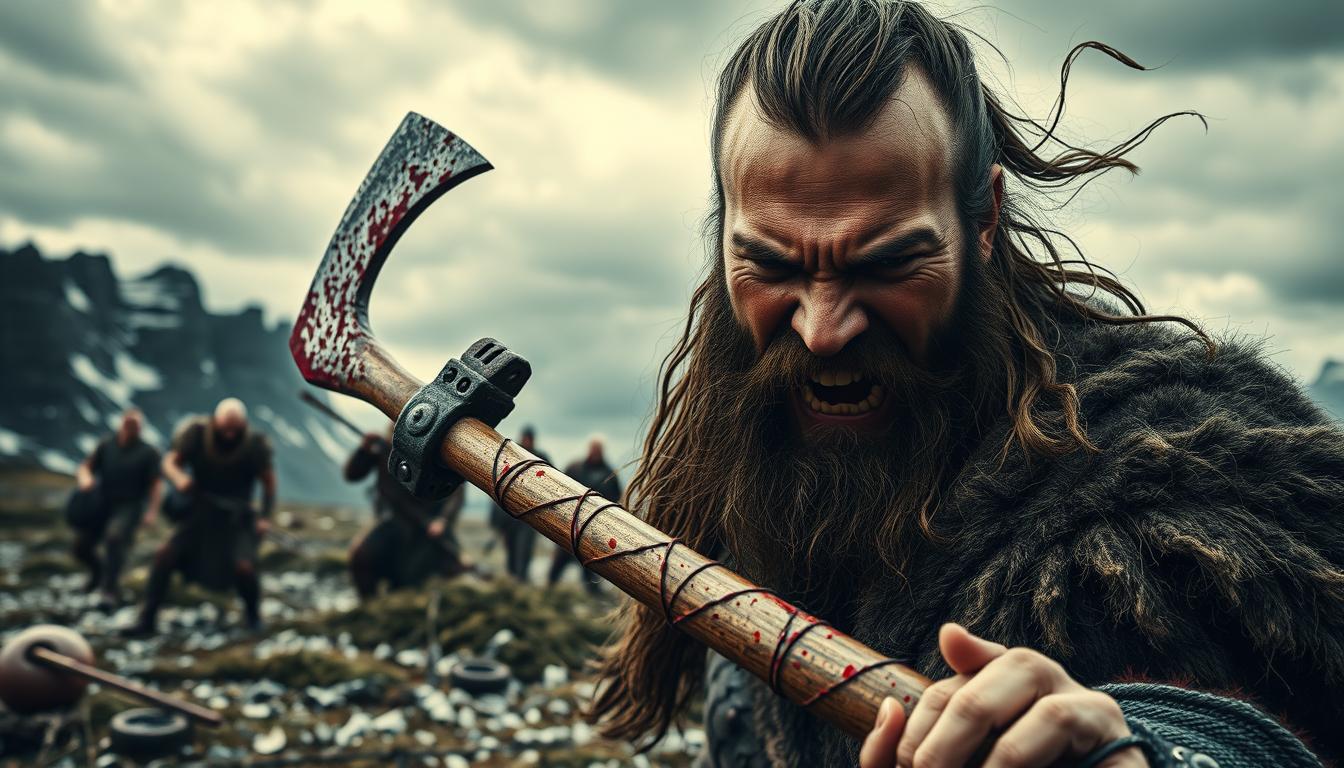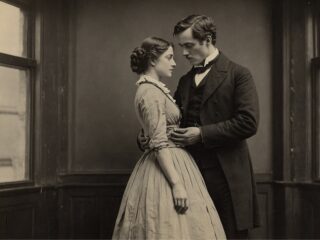Archaeological evidence uncovers a disturbing truth about Norse brutality, challenging our idealized perception of Vikings. These Scandinavian warriors were far more complex and brutal than popular culture portrays, with practices that would appall modern sensibilities.
The Viking world was a realm of extreme violence, where disturbing facts about the Vikings unveil a society founded on survival, conquest, and ruthless cultural practices. Their reputation as mere raiders barely scratches the surface of their intricate and often terrifying social dynamics.
Understanding the Vikings necessitates stripping away layers of mythological glamour to reveal the raw, unfiltered reality of their civilization. From ritualistic violence to brutal social norms, these Norse warriors embodied a culture that was both sophisticated and shockingly savage.
Key Takeaways
- Vikings had complex social structures beyond simple raiding
- Norse brutality extended into multiple aspects of daily life
- Ritualistic violence was deeply embedded in Viking culture
- Survival often demanded extreme measures in Viking society
- Archaeological evidence continues to reshape our understanding of Vikings
Human Sacrifices in Viking Rituals

The realm of Viking pagan rituals is shrouded in a somber veil, revealing a haunting facet of their societal fabric: the practice of human sacrifices. Excavations in Denmark have unearthed evidence that casts a shadow over their spiritual practices. At Trelleborg and Tissø, the discovery of human remains illuminates the macabre spiritual convictions of Viking society.
Viking raids transcended mere conquest; they were an integral part of their religious rituals, characterized by blót sacrifices that sometimes demanded human offerings. Thietmar of Merseburg’s historical accounts detail the occurrence of monumental ritual sacrifices, every nine years, involving the sacrifice of 99 individuals and animals to appease their deities.
The archaeological site near Tissø has yielded findings that are particularly disquieting. The discovery of four children, aged 4-7 years, in sacred wells suggests these locations held profound symbolic significance within Viking spiritual practices. These rituals, overseen by Gode, local leaders, involved the ritualistic sprinkling of blood on altars and walls.
Place names such as Onsholt, meaning “Odin’s Wood,” suggest locations where human and animal sacrifices might have been performed. These rituals were deeply intertwined with Viking religious beliefs, reflecting a worldview where blood offerings were deemed crucial for communication with their gods.
Though deeply disturbing to contemporary sensibilities, these human sacrifices were a pivotal aspect of Viking spiritual and cultural practices. They expose the complex and often brutal nature of their religious traditions.
The Practice of Blood Eagles

The Vikings were renowned for their ferocity, exemplified by the Blood Eagle ritual. This execution method symbolized the peak of psychological warfare among bloodthirsty warriors.
Though archaeological evidence is limited, Norse sagas vividly depict the ritual’s horrors. It entailed carving a design on the victim’s back, breaking their ribs, and extracting their lungs to form wing-like shapes. Researchers from the University of Iceland argue its feasibility, despite historical skepticism.
Reserved for those who brought significant dishonor, the Blood Eagle aimed to restore social prestige. Victims included King Aella of Northumbria and other prominent figures. This ritual was more than an execution; it was a profound declaration of Viking warrior culture.
Modern media, such as “Vikings” and video games, has brought this practice to light. Historians still debate its truth, yet the Blood Eagle stands as a chilling reminder of Viking society’s violent underpinnings.
Whether rooted in fact or myth, the Blood Eagle encapsulates the psychological depth of Viking warrior society. It was a realm where honor, brutality, and reputation were inescapably intertwined.
Viking Slave Trade and Exploitation

The Viking slave trade was a manifestation of their brutal economic system, fueling their violent conquests. These raiders transformed human trafficking into a sophisticated commercial enterprise. They captured people from various European regions, selling them across vast trading networks.
Vikings established Dublin as a critical hub for slave markets, systematically pillaging and plundering Celtic and Anglo-Saxon territories. Thralls, as enslaved people were called, represented a significant economic resource for Norse societies. Archaeological evidence reveals the extensive reach of this inhuman practice.
Genetic studies show the profound impact of Viking slave trading. Remarkably, approximately 30% of the average Icelandic resident’s DNA can be traced back to Irish slaves, demonstrating the widespread nature of their human trafficking operations. The Persian traveler Ibn Fadlan documented horrific accounts of slave sacrifices, including ritual killings where slaves were murdered alongside their masters.
The Viking slave trade wasn’t just about economic gain. It was a systematic method of terrorizing and subjugating conquered populations. Slaves faced unimaginable brutality, serving in various roles from domestic workers to manual laborers, with little hope of liberation.
This dark chapter of Viking history reveals a complex society where human exploitation was deeply embedded in their cultural and economic practices. It challenges modern perceptions of these notorious raiders.
Grave Goods and Human Burials

Viking burial practices unveil a realm of barbaric rituals, deeply rooted in pagan traditions. Archaeological findings expose extraordinary customs, transcending mere burial. Entire families and servants were often interred together, with multiple individuals, including men, women, children, horses, and dogs, sharing a grave.
These elaborate rituals underscored profound spiritual convictions regarding the afterlife. Temporary graves for prominent figures were adorned with provisions such as food, musical instruments, and personal items. Chieftains, in particular, were honored with grand send-offs, including ship burials, emblematic of Viking funeral rites.
Archaeological discoveries have revealed shocking instances of body modifications during burial. For example, a woman’s jaw was replaced with a pig’s jaw, illustrating the symbolic depth of these rituals. Ship burials, often involving the setting of elaborate vessels ablaze after days of ceremonial preparation, were a hallmark of Viking funeral practices.
The Vikings practiced re-killing in their burial traditions, deliberately breaking weapons or dismembering bodies to prevent the deceased from returning as vengeful spirits. Grave goods, such as weapons, tools, jewelry, and animal sacrifices, reflected the individual’s social status and spiritual beliefs.
Notable burial sites like the Oseberg ship in Norway and the Birka grave offer a glimpse into the intricate nature of Viking funerary practices. These discoveries continue to captivate researchers, providing deep insights into a culture that viewed death as a complex spiritual journey.
Berserkers: The Original Rage Warriors

Viking warriors, known as berserkers, were the epitome of terror in Norse lore. These formidable fighters entered a trance-like state called “berserkergang,” transforming them into unyielding combatants. The term “berserkr” originates from Old Norse, signifying “bear shirt,” hinting at their primal transformation.
In battle, these specialists would unleash a cacophony of howls, bite their shields, and appear impervious to pain and fear. Their ferocity positioned them as shock troops, leading the charge in Viking formations. Adorned in animal pelts, they were believed to tap into supernatural warrior energies.
Linked to the god Odin, berserkers underwent ritualistic preparations for combat. Psychological theories propose they might have employed psychoactive substances to achieve their frenzied state. Their uncontrollable ferocity was so feared that Iceland outlawed them in 1015, acknowledging their societal menace.
Archaeological findings, such as the Torslunda plates, illustrate these warriors in their ritualistic metamorphosis. Post-battle, berserkers would collapse, exhausted from their intense psychological and physical exertions—a reflection of their extreme combat state.
Infanticide and Population Control

The shadow of norse brutality cast a dark specter over Viking society, manifesting in the chilling practice of infant selection. Families made life-or-death decisions for their newborns, evaluating their potential to contribute to the community’s strength. This brutal calculus was a stark reflection of the societal values of the time.
Female infants bore the brunt of this barbaric practice. Selective infanticide skewed the population demographics, with girls facing a significantly higher risk of abandonment or death. Archaeological findings corroborate this grim reality, revealing a stark gender imbalance in Viking populations.
Economic necessity drove these heart-wrenching decisions. In the harsh Scandinavian environment, families could only sustain children they deemed capable of becoming formidable warriors or productive members of society. Weak or sickly infants were often left to face the unforgiving elements, ensuring their demise.
This approach to population management underscored the Vikings’ pragmatic stance. By eliminating perceived “weak” offspring, they aimed to maintain a resilient community, equipped to thrive in extreme conditions. The resultant gender disparity profoundly influenced Viking social structures and demographic evolution.
Though shocking by today’s standards, these practices were a calculated survival strategy within Viking culture’s complex social dynamics. They highlighted the brutal pragmatism that defined Norse societal norms during that era, a testament to the harsh realities of Viking life.
Viking Laws and Brutal Punishments

The Viking legal system was a complex network of social order, revealing the depth of viking cruelty in their judicial practices. Their thing assemblies were community gatherings where laws were established and disputes resolved through often barbaric practices that would shock modern sensibilities.
Punishment in Viking society was rarely mild. Outlawry was perhaps the most terrifying sentence a person could receive. When declared an outlaw, an individual lost all legal protections, meaning anyone could kill them without facing legal consequences. This brutal method of social control ensured compliance through fear and absolute ostracism.
The Vikings developed unique methods of resolving conflicts that reflected their harsh cultural norms. Holmgang, a ritualized duel, allowed combatants to settle disputes through mortal combat. The loser could be killed without legal repercussions, demonstrating the Viking commitment to resolving conflicts through extreme measures.
Some punishments were designed to be publicly humiliating and painful. Tarring and feathering involved shaving a person’s head, covering them in tar, and then throwing feathers over them. They would then be forced to run a gauntlet of stones and bricks, adding physical torment to the public shame.
Ordeal by fire was another chilling method of determining guilt or innocence. An accused person would be required to handle hot objects. Survival was interpreted as divine proof of innocence, while burns or death signified guilt – a stark representation of viking cruelty in their judicial system.
Wrapping Up: 7 Most Disturning Facts About The Vikings
The Norse brutality we’ve explored reveals a complex civilization far beyond simple stereotypes. Vikings were not just raiders but sophisticated societies with intricate social structures and cultural practices that challenged traditional understanding of medieval life.
These disturbing facts about the Vikings demonstrate how historical narratives can be multifaceted. From human sacrifices to brutal punishments, their world was marked by extreme violence and sophisticated strategic thinking. The overabundance of young men in Scandinavia drove expansionist behaviors, creating a culture of exploration and conquest.
Understanding Viking society requires moving past romanticized portrayals. Their culture was shaped by environmental challenges, population pressures, and a warrior ethos that valued strength and survival. The decline of Viking power came through Christianity’s spread and European kingdoms’ centralization, marking a significant transformation in medieval social dynamics.
Ultimately, the Vikings remind us that historical cultures are nuanced, resisting simple moral judgments. Their legacy continues to fascinate researchers and the public, offering profound insights into human adaptation, survival, and societal evolution during one of history’s most dynamic periods.
FAQ
Did Vikings really perform human sacrifices?
Affirmative, archaeological findings substantiate the Vikings’ engagement in human sacrifices as a component of their religious practices. These acts, deeply ingrained in their spiritual ethos, have been corroborated by the discovery of sacrificial sites and the remains of children associated with these ceremonies.
What was the Blood Eagle execution method?
The Blood Eagle, a purported Viking execution technique, elicits debate regarding its historical veracity. Described as carving an eagle-like pattern on the victim’s back, spreading their ribs, and extracting their lungs to resemble wings, this method exemplifies the brutality attributed to Viking practices.
How extensive was the Viking slave trade?
The Viking slave trade was a cornerstone of their economic and social frameworks. Through raids across Europe, they captured individuals, treating them as commodities. This widespread exploitation positioned slaves as a vital component of Viking society and trade networks.
What happened during Viking funeral practices?
Viking funerals were characterized by elaborate ship burials accompanied by human sacrifices. Slaves were killed to accompany their masters into the afterlife, and valuable goods were buried with the deceased. These practices reflected complex beliefs about death and social hierarchy.
Who were the berserkers?
Berserkers were legendary Viking warriors renowned for their battle frenzy. They were believed to wear animal skins and possibly use hallucinogens to achieve a state of martial fury, rendering them formidable and unpredictable.
Did Vikings practice infanticide?
Affirmative, infanticide was practiced in Viking society, predominantly targeting female infants due to economic constraints and cultural preferences for male offspring. This practice was influenced by the harsh conditions and limited resources of Scandinavian environments.
How did Viking legal systems work?
Viking legal systems were based on thing assemblies, where community members resolved disputes and established laws. Punishments were severe, including outlawry, blood feuds, and physical mutilation for various offenses.
Were all Vikings violent warriors?
Contrary to popular perception, Viking society was complex. While they were known for raiding and warfare, they were also adept traders, explorers, and craftspeople. Their culture encompassed sophisticated social structures, advanced shipbuilding, and complex religious and legal systems.
How did Vikings treat women in their society?
Surprisingly, Viking women enjoyed more rights than many contemporary societies. They could own property, divorce their husbands, and wield significant social influence. This progressive aspect starkly contrasts with the brutal practices prevalent in other areas of Viking culture.




